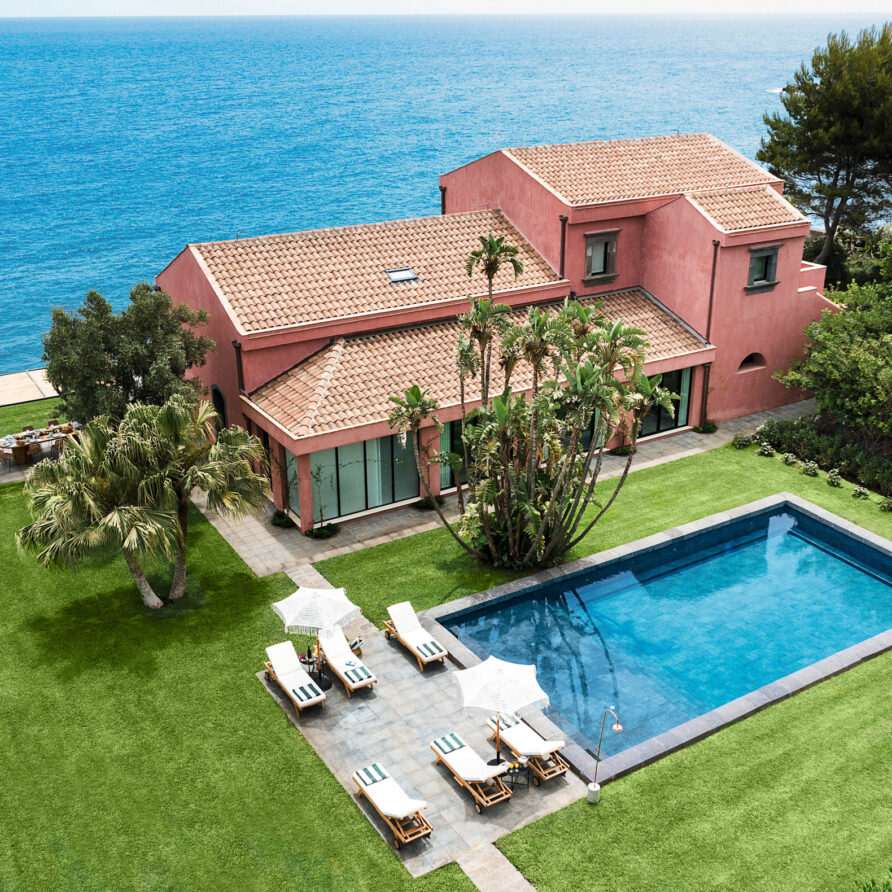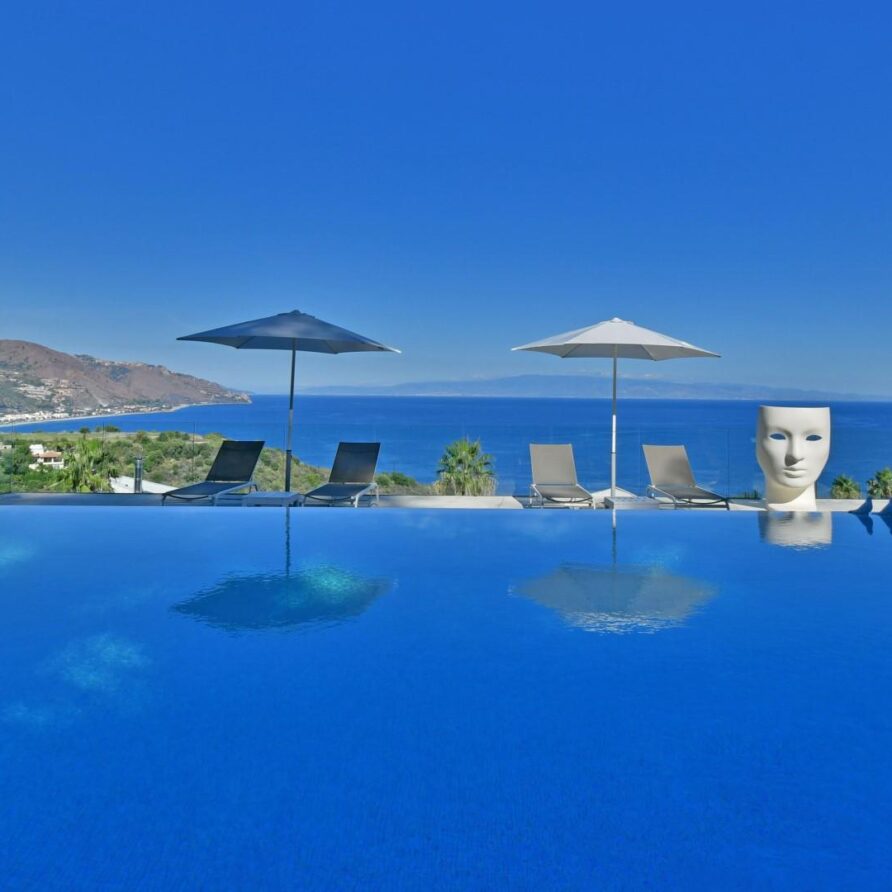The History of Sicily, Italy
The history of Sicily is a story of conquest, culture, and resilience stretching back over 3,000 years. Positioned at the heart of the Mediterranean, this island has been shaped by successive waves of people, from ancient settlers to medieval kingdoms and modern movements, all of which have left their mark on its identity today.
Table of Contents
- Ancient Civilizations and the Arrival of the Greeks
- The Historic Legacy of Syracuse
- Roman Rule and the Spread of Christianity
- Arab and Norman Periods: A Golden Age
- The French, Spanish, and Bourbon Eras
- Modern History and Regional Identity
- The Sicilian Mafia: A Complex Legacy
- Sicily Today: A Living History
- Featured Villas
Ancient Civilizations and the Arrival of the Greeks

Sicily’s history begins with the earliest human settlements. In the northwest of the island, prehistoric cave paintings can still be seen, evidence of life dating back to the Paleolithic and Mesolithic periods.
By around 750 BC, Greek settlers arrived, attracted by Sicily’s fertile soil and strategic position. They established cities like Naxos and brought their language, religion, and architecture. This marked the beginning of Sicily’s era as part of Magna Graecia, or “Greater Greece.”
The remains of Greek temples and theaters in places like Agrigento, Segesta, Selinunte, and Eraclea Minoa are among the island’s most treasured historical sites. However, the Greeks were not alone in vying for control. Sicily became a battleground between the Greek colonies and the Carthaginians until the pivotal Battle of Himera in 480 BC, which gave the Greeks the upper hand, at least for a time.
The Historic Legacy of Syracuse

Syracuse is one of the most important cities in the history of Sicily, and of the entire Mediterranean. Founded by Greek settlers from Corinth in 734 BC, it quickly rose to power as a major hub of trade, culture, and military strength. At its height, Syracuse rivaled Athens in wealth and influence, and even held off the Athenian siege during the Peloponnesian War.
The city was home to the famous mathematician and inventor Archimedes, who developed many of his theories here. Today, visitors can walk through the Parco Archeologico della Neapolis, which includes the massive Greek Theatre, the Roman Amphitheatre, and the Ear of Dionysius, an acoustic cave with a rich legend.
Ortigia, the historic core of Syracuse, offers narrow streets, ancient temples, Baroque churches, and a blend of architectural styles that reflect the city’s long and varied past. From Greek temples repurposed into Christian churches to medieval fortresses, every corner of Syracuse tells a story.
Its deep roots in art, philosophy, and engineering make Syracuse a living monument to Sicily’s ancient past—one that still feels alive in the present.
Roman Rule and the Spread of Christianity
After centuries of conflict, Rome defeated the Carthaginians and brought Sicily into its growing empire. The island became known as the “Granary of Rome” thanks to its vital role in feeding the empire. But despite this promise, Sicily’s time under Roman rule was marred by corruption and unrest.
By the early 4th century AD, the Roman Empire began to decline. Christianity spread through the region, and Sicily faced invasions from Germanic tribes like the Vandals and Ostrogoths, followed by control from the Byzantine Empire. Each wave of influence added another layer to the island’s evolving identity.
Arab and Norman Periods: A Golden Age

In the 9th century, Arab rulers transformed Sicily with new technologies, crops, and cultural practices. They introduced citrus farming, advanced irrigation, and a love for literature, mathematics, and architecture that still echoes in the island’s culture today.
The Normans arrived in the 11th century, ushering in what many call Sicily’s “Golden Age.” Under rulers like King Roger, people of many faiths and backgrounds, Muslims, Jews, Christians, and Byzantines, lived and worked side by side. This tolerance gave rise to a distinctive style of architecture known as Sicilian Romanesque, blending Norman, Arab, and Byzantine elements.
Palermo thrived as a wealthy, multicultural capital. But after just over a century, Norman rule ended, and Sicily passed to new rulers from the Swabian (German) Hohenstaufen dynasty.
The French, Spanish, and Bourbon Eras
French and Aragonese Rule
After Emperor Friedrich II died in 1250, Sicily fell under the short-lived control of Charles of Anjou, the French king of the Two Sicilies. His harsh rule sparked the Sicilian Vespers uprising in 1282, after which Peter III of Aragon claimed the island. Sicily then became part of the Aragonese Crown, eventually coming under Spanish influence.
Bourbon Rule and the Kingdom of the Two Sicilies
In 1734, Charles of Bourbon (later Charles III of Spain) invaded Sicily during the War of the Polish Succession and became its king. Although Sicily and Naples shared the same monarch, they remained separate kingdoms until 1816, when they merged into the Kingdom of the Two Sicilies.
Garibaldi and Unification
In 1860, Giuseppe Garibaldi led his famous Expedition of the Thousand across Sicily, landing at Marsala and capturing Palermo, which led to the fall of Bourbon rule and the unification of Sicily with the Kingdom of Sardinia. This was a key moment in Italian unification.
Palermo’s Revolt of 1866
After unification, public unrest persisted. The Revolt of Palermo in 1866, also known as the “Seven and a Half Days Revolt,” was a significant uprising against Northern Italian rule. Italian forces suppressed the revolt, but it highlighted regional tensions during Sicily’s integration.
Modern History and Regional Identity

After unification, many Sicilians faced poverty and instability. Between 1871 and 1914, large numbers emigrated to the United States in search of opportunity.
Following World War II, Sicily gained special autonomous status within Italy in 1946, a recognition of its unique culture and history. This autonomy remains in place today and is an important part of the island’s identity.
The Sicilian Mafia: A Complex Legacy
The history of Sicily also includes more difficult chapters. In the mid-20th century, organized crime became a powerful force on the island, influencing politics, business, and everyday life.
By the 1980s and 1990s, law enforcement began to fight back with landmark prosecutions and public support. While challenges remain, Sicily has made major progress, and today, the island is focused on growth, tourism, and cultural pride.
Sicily Today: A Living History

The history of Sicily is all around you. It lives in the ancient ruins and churches, the narrow streets of medieval towns, the flavors of traditional cooking, and the stories passed down through generations.
Whether you’re visiting a UNESCO World Heritage site, staying in a countryside villa, or strolling through a lively market in Palermo or Syracuse, you’ll feel the island’s past woven into everyday life.
At Sicily4u, we believe that the best way to experience the history of Sicily is to see it for yourself, up close, with time to soak it in. Browse our handpicked villas and start planning your journey through this extraordinary island, where history, culture, and beauty meet.





